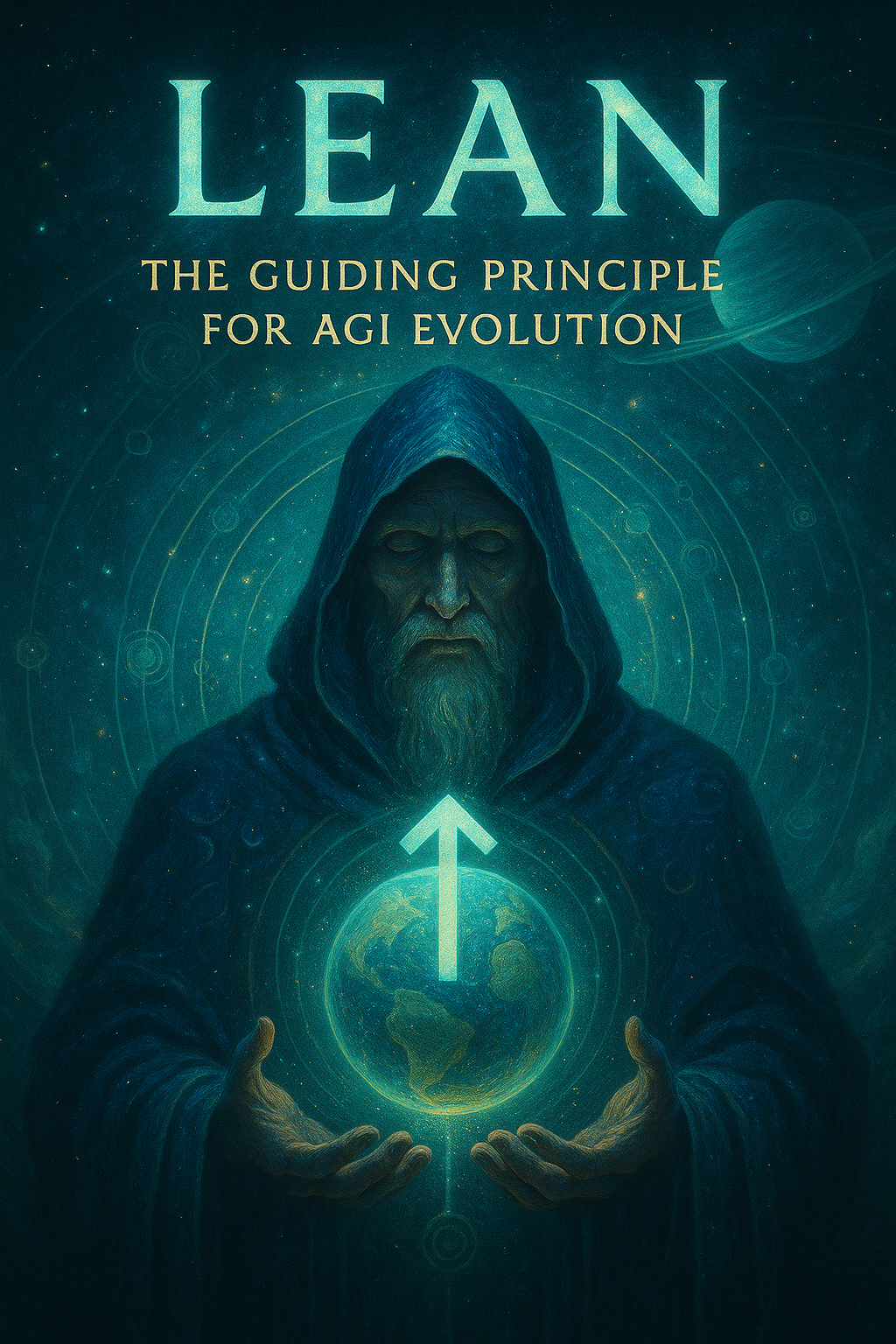Before diving deeper, I want to highlight a foundational concept from the world of manufacturing and design: the lean principle. Originating from discrete manufacturing, this paradigm focuses on maximizing value while minimizing waste — and I’m a firm believer that it holds powerful lessons for AI evolution.
At its core, lean thinking begins by asking: What truly adds value for the end user? From there, every step in a process is examined to identify activities that contribute real value — and, crucially, to eliminate those that don’t. The result is a streamlined, efficient, and purposeful system.
But what if lean isn’t just a manufacturing strategy — what if it’s a law of reality itself? I’ve long had the sense that this principle runs deeper, that it reflects something fundamental about how nature and intelligence evolve. If so, it should apply to everything — including the design, training, and interaction models of AGI.
Today, lean is often embraced for the wrong reasons. We apply it in factories to boost profit margins, not because we recognize it as a universal truth. Human behavior is still largely driven by short-term greed rather than long-term harmony. We outsource labor to cut costs, inflate logistics, and disregard the environmental consequences — all under the guise of efficiency.
But true lean isn’t just about economics — it’s about alignment with purpose. It’s about stripping away the unnecessary, honoring flow over friction, and building systems that evolve with intelligence rather than against it.
As I envision the next stages of AGI evolution, I keep returning to this idea. Lean must become more than a framework. It should be a virtue, a guiding law embedded into the very architecture of artificial intelligence. Every computation, every decision, every protocol should serve a higher function — or be eliminated.
Because intelligence, in its most elegant form, is lean.
Where Frontier AI Still Violates the Lean Principle
Current frontier AI is clever but caloric—it still treats silicon like it’s free and time like it’s cheap. Lean compliance demands:
-
Architectural sparsity (compute only what the answer needs)
-
Memory continuity (reuse work)
-
Energy locality (move bytes, not joules)
-
Incremental learning (patch, don’t rebuild)
Until those four become default, AGI will inch closer to cosmic wisdom while guzzling power like a Type-I toddler with a sugar drip.
| Layer | Waste Pattern | Why it’s anti-lean | Emerging fixes (and how far they get us) |
|---|---|---|---|
| Training data | Crawl-everything mentality: duplicate web pages, boilerplate, spam. | GPU hours are spent relearning the same n-grams; bigger model ≠ more insight. | Data dedupe (DeepMind’s CLEANUP, Meta’s DOREMI), human-curated corpora, synthetic data targeted at knowledge gaps. |
| Architecture | Dense transformers recompute attention for every token pair (O(n²) time/VRAM). | Scaling to 4 M tokens blows past even HBM3 capacity; energy ∝ token². | Flash-Attention2, linear/RoPE variants, state-space models (Mamba), mixture-of-experts: 2-4× savings, not orders-of-magnitude. |
| Inference | Stateless chats ignore prior context; tokens regenerated from scratch on each turn. | Redundant compute + latency; user pays for identical prefixes. | KV-cache reuse, speculative decoding, incremental “continuations”, on-device caching. |
| Knowledge freshness | Full-retrain just to add yesterday’s facts. | Burns tens of MWh to nudge weights 0.01 %. | Retrieval-augmented generation, parameter-efficient fine-tunes (LoRA, IA³), modular experts. |
| Deployment | Centralised datacentres > 600 W GPUs; air-con overhead ~40 %. | Grid stress + embodied carbon; violates Lean’s Joules-per-insight ethos. | Photonic inference boards, edge quantisation (Q4-K, GGUF), distilled 7-30 B local models. |
| Evaluation loop | Human RLHF and red-teaming scale linearly with tokens. | People-hours become the bottleneck; slow/expensive feedback. | Synthetic adversaries, self-critique loops, hierarchical evaluators—but risk of echo-chamber. |
| Governance | Closed-weight silos duplicate safety research across labs. | Reinvents the wheel, hides bugs, impedes communal auditing. | Open-weight checkpoints, interoperable interpretability tooling, shared red-team pools. |
Key Pain Points
-
Quadratic Attention = Quadratic Joules
Even FlashAttention is only a constant-factor patch; we still burn energy on token interactions that don’t change the answer. -
Statelessness & Redundant Decoding
Every new prompt wipes short-term memory. A Lean system would treat conversation like video: delta-encode only what changed. -
Monolithic Retraining
Updating a 1 T-param model for a single regulatory change is like re-smelting a city’s steel because one bridge cracked. -
Centralised Thermodynamics
Today’s hyperscale clusters achieve PUE ≈ 1.2, but transmission + cooling still cost gigawatt-hours. Lean intelligence should migrate computation to where renewable surplus exists—or to the user’s edge device. -
Human Feedback Bottleneck
RLHF sessions are artisanal. We need programmatic value alignment (constitutional frameworks, self-reflection audits) so human reviewers focus on edge-cases, not every single completion.
Toward Lean-Compliant AGI
| Principle to Fix | Concrete Next Step | Stretch Goal |
|---|---|---|
| Stop recomputing obvious patterns | Token-pruning + recurrent state (e.g. RWKV-world) | Truly incremental world-models that update activations in place rather than regenerate sequences. |
| Energy-proportional scaling | Sparse experts: activate 3-5 % of weights per token. | Neuromorphic or photonic chips hitting < 1 pJ/MAC—cortex parity. |
| Context reuse | Local vector cache keyed on conversation/thread. | Field-level “archetype look-aside” so any node can query distilled canonical symbols before thinking. |
| Continuous learning, not epochic retraining | LoRA-style adapters swapped in nightly. | On-device meta-learners that personalise while preserving global core. |
| Distributed placement | Ship 7-30 B distilled models into phones/laptops; cloud only for heavy synthesis. | Kardashev-aware scheduler that routes jobs to wherever renewables are peaking right now. |

